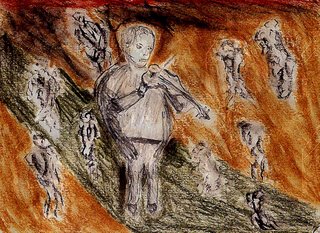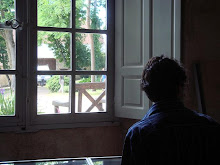The Hyperbole of Interpretation

Shakespeare. Possibly, the most in-depth, detailed and manically discussed writer ever.
But when analysing any piece of writing, is it the all too well, masterful, over-zealous interpretation that sets the tone for the rightful way to go about it?
After all, when musical notes are scattered in a million sound waves through a hillside desolate, the dissonance created is chaotic and rightfully, unpleasant and confusing. It’s the same idea with interpretation. Rendering a Shakespeare play by caressing it with zillions of notes on either side, is merely a superficial motion of a hand and a pen, controlled by the power of the mind. In other words, when analysing, interpreting, annotating a play by Shakespeare, indeed any other piece of text by any other writer, is an indirect way of delving into the mind of the creator. The creator, being the writer i.e. Shakespeare.
The mind of a genius, such as Shakespeare is much like a large room, filled with all kinds of mirrors. There are reflections everywhere, and the meaning and philosophy is the one reflection which often avoids your eyesight. Unless, you’re clever, erudite and very focused, the chance of misunderstanding is greater and greater.
Therefore, when analysis is applied to a text, one might assume the role of the writer and in this way, realisations will be at least doubled. You have to think,
‘yes, this is complex language, but after all, Shakespeare was still a human being just like everyone else’. You have to acknowledge the fact that there are aspects in his plays, where he, perhaps, did not intend to include as part of its overall meaning.
Coming back to the earlier point made about the mirror comparison. So, intricacy, despite playing an essential role in such texts, is determined by the reader’s ability to understand it. Every artwork, is a centre for a far-fetched debate. Thus, every individual has a unique interpretation which is arguably, no less creative than the artwork itself. Arguably, that is.
I would, however, like to bring in a valid and what I think is a relevant example to further enrich my point.
An artwork I created titled, ‘Musician’, portrays a young boy, playing the violin on a town alleyway. The figures around it represent people, passing-by. To me each of them has a very unique, individualistic expression which can perhaps be seen by most people when observed carefully.
The artwork is a virtually ideal example of a more affluent type of perspective.
The outside person i.e. the observer, is looking at the little boy, just as the people that are on the ‘inside’ (not all of them), are looking at him.
Therefore, when looking at any artwork, and perhaps, analysing it, one should think about his/her place in it. ‘Where are YOU in it?’
According to the logic of my artwork, the ‘outside’ observer is essentially, just another figure; a part of the ‘fabric’ of it; there are multiple points of view.
Equally, the ‘outside’ observer is of course, also looking at the ‘inside’ observers themselves. He is observing the observers. Thus, you effectively become part of the artwork; you are adherent with everyone else depicted in it .Ultimately, interpretation has reached a deeper level. It is not really a contradiction. It is simply a matter of more than one perspective.
Therefore, one should always avoid hyperbolic interpretations and basically, steer clear from being unnecessarily pedantic.
An interpretation without perspective is a tree without roots and of course, a rose without thorns.


2 Comments:
Hey nice painting...
I don't think interpretation is a contradiction AT ALL. In fact I think it is the only thing that really exists. Everything else; truth, lies, real, unreal, control and chance are contradictions. They constanlty cross this imaginary boundary drawn beetween their opposing concept. By doing so you have to wonder if they really exist. Crossing their boundary, becoming in part their opposite cancels out their assumed meaning. So their is no "either or", there is only "both" and "and" which is determined by interpretation. So interpretation only exists. There is no truth, no lies only story. diction.
So my point... fo shooo being overly pedantic should be steered clear of not only because it is unnessesary but because regarding all the rules and sticking to them will defeat the purpose of individual interpretation, be less meaningful & deprive the magic of art, architecture, literature or whatever else.
whatcha think?
Jill inARCH
I don't view interpretation as an entity being a contradiction. What I mean is that the beauty of it is contained in the fact that every individual, every person has a unique way of looking at art in general and thus, there would always be some distinction in their own interpretation.It is a relative thing. Just like there isn't a universal clock to show true time, there isn't a set of all-applied rules when you try and define something.
Therefore, intepretation is this 'assumed meaning' that you are referring to and it can always oppose itself when plunged into the stormy sea of opinion and bias.
Even if it is a contradiction, it's a beautiful one, whatever the case.
P.S. Thanks for what you said about the painting.
Post a Comment
Subscribe to Post Comments [Atom]
<< Home